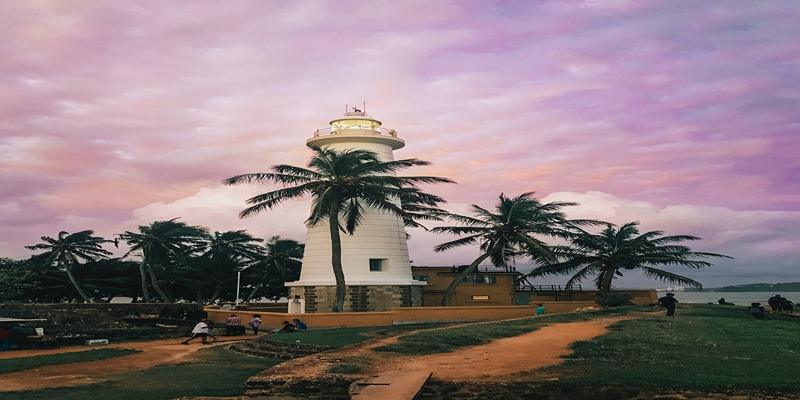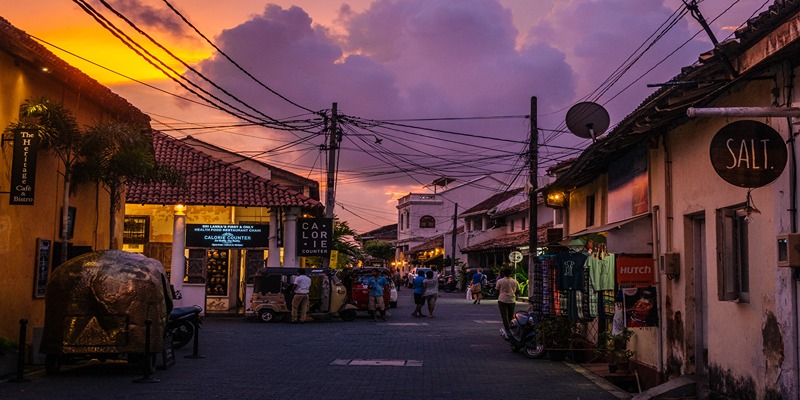Sinharaja Forest Reserve is a green realm and a colorful haven for rare species, located in a charming corner of Galle, Sri Lanka. This beautiful Sri Lankan jungle does more than provide a sylvan sight, what with its perfume of damp soil and the symphonies of unseen animals. Sinharaja promotes itself as a unique treasure trove of biodiversity in a world where natural places are disappearing at an alarming rate. This sanctuary, which protects many species of flora and wildlife found only on this teardrop-shaped island, is a living demonstration of the extraordinary variety and richness found in the natural world.
Geographical Significance and Ecology
This Sri Lankan rainforest, located in the Galle district, covers a large area and has height variations that give rise to a variety of habitats. Sinharaja is more than just a forest; it's a complex biological miracle with a wide range of temperatures that support a wide variety of animal and plant populations, from tropical wet to montane. The curves of the land, which might be difficult to traverse at times, actively contribute to ecological variety. This results in varying climate zones, ideal for a wide variety of organisms.
Why Sinharaja Serves as a Biodiversity Hotspot in Galle
Sinharaja is more than just a verdant paradise within Sri Lanka's borders; it's also an essential part of the world's effort to preserve biodiversity. This sacred site serves as a home to many species, many of which can be found nowhere else on Earth, with a fertility that defies casual observation. The forest reserve protects a unique gene pool, which helps to ensure the survival of many species across the world. Because of the unique genetic material it contains, Galle is considered a biodiversity hotspot, elevating the importance of our ardent efforts to preserve the area.

How To Navigate This Sanctuary
Transport Links and Options
Navigating into this ecological stronghold demands some forethought for the interested traveller eager to see Sinharaja's sylvan beauties. The forest reserve may be reached via a number of different routes from several cities in Sri Lanka, including Galle, Deniyaya, and Kalawana. Those with a sense of adventure may choose to take the local bus, which is cheap but takes a long time. Although tuk-tuks are easily accessible, their usefulness decreases in more rough areas. If you value comfort and efficiency, renting a vehicle or taking a cab is still your best bet. Numerous travel firms provide comprehensive packages that take care of all the details, making it easier to have a planned vacation. Prepare for a winding voyage across green hills and winding roads, regardless of the mode you choose, with each twist and turn taking you closer to a realm distant from man-made reality.
Best Time To Visit
There are a number of climate-related factors to think about while planning a Sinharaja excursion. August and September are often the driest months, with bright sky and low rainfall, perfect for wildlife viewing. But from November through April, during the monsoon season, the jungle is showered with heavy rainfall. Although this time of year is when the forest is at its most vibrant and full of noises and colors, it also presents difficulties for the traveler. As a result, late summer and early fall reveal themselves as the most agreeable times of year, offering an ideal balance of comfort and stimulating experiences.
Must-Have Items
A journey via Sinharaja requires much planning. In the wilderness, a topographical map is your best friend, and a GPS will give you peace of mind. Wear appropriate clothing, such as breathable, quick-drying materials that can withstand the sun and the unpredictable climate of the woods. Hiking on rough terrain need a sturdy pair of footwear with plenty of ankle support. Essentials like high-energy food, a reusable water bottle, and a first-aid kit should be carried in a large backpack. Don't forget the sunscreen and bug repellent; they'll keep you safe from the forest's less obvious dangers. Your ensemble would be incomplete without a small torch and a multi-function utility knife.
The Flora and Fauna – An Observatory for Endemic Species
Noteworthy Plants
An incredible variety of flora that defy easy classification may be found inside Sinharaja's verdant vastness. A lush canopy of dipterocarp trees provides shade for a diverse understory of orchids, ferns, and medicinal plants. Among these is the Nelu flower, a symbol of beauty and majesty in local legends. This botanical zoo, which includes many types of carnivorous pitcher plants, is sure to delight any plant lover.
Extraordinary Animal Life
The zoological extravaganza in Sinharaja is equal in variety and beauty to the floral display. There is a delicate but continuous equilibrium in the forest, where athletic giant squirrels move through the canopy and secretive leopards monitor the ground below. Purple-faced langurs and sambhar deer, two of Sri Lanka's indigenous species, are among the animals that visitors could see if they're lucky. It's more than just trees; this ecosystem is vast and alive.

Observing Birds
Sinharaja is a haven for birdwatchers and ornithologists. The Sri Lankan blue magpie is a brilliantly coloured native bird that could be seen by a keen eye when strolling through the woodland understory. The cacophony of sounds, which includes those of hornbills and drongos, creates an audio tapestry as rich as the visual spectacle. These are certainly not all of Sinharaja's amazing bird species, but they provide for a great introduction to the region's rich biodiversity.
Tips and Guidelines for a Fruitful Journey
Sinharaja's rich biotic tapestry calls for not only excitement but a precise set of tactics to ensure the most fruitful voyage possible. Hiring a local guide is a must, since they are a wealth of information and will enhance your trip with insights gained from their culture and experience. Many animals are most active at dawn and dusk, therefore these are the best times to see them. Respect this delicate ecosystem by following the "leave no trace" principle, which means bringing trash back with you and staying out of native areas. Adhering to these rules will not only ensure a pleasant experience, but will also help ensure the survival of the refuge for future generations.
Cultural Context and Community Practices
There is a symbiotic relationship between Sinharaja and the local community in which both parties benefit. Generations of refinement in traditional practices, such as beekeeping and herbal medicine, show that humans can live sustainably alongside forests. In addition, the spiritual component added to the environment by local folklore increases its ecological value. Grassroots environmental care is best represented by community-led conservation activities, which further strengthen the complex connection between humans and this verdant world. Visitors might have a deeper appreciation for Sinharaja if they take the time to learn about and consider the region's rich cultural history.
Conclusion
We are invited into a world where nature's complexity unfold in beautiful harmony by entering Sinharaja Forest Reserve, a haven of exceptional variety and a living witness to Sri Lanka's ecological grandeur. Lessons in resiliency, balance, and cohabitation may be learned from Sinharaja by both travellers and scientists. The forest serves as a cultural emblem, a location of incredible biological variety, and a vital gene bank, all of which highlight the inestimable worth of the natural world. Visiting Sinharaja is like having a profound conversation with the planet itself.

Sean William Sep 22, 2023
7 top-rated Trekking places in Thailand for your bucket list

Juliana Daniel Oct 27, 2023
Farm Stay Experience In Panchgani

Daniel Jackson Aug 01, 2023
Best Living Places In Dubai

Sean William Oct 27, 2023
Top 5 Hill Stations in India That You Must Visit In Summer

Sean William Aug 02, 2023
Hill Stations Near Chandigarh You Must Visit For Surreal Views

Juliana Daniel Oct 27, 2023
Exploring Malhar Machi Resort, Mulshi

Juliana Daniel Oct 16, 2023
Haunted places in Pune: let’s Unveil Haunted Locations

Sean William Aug 05, 2023